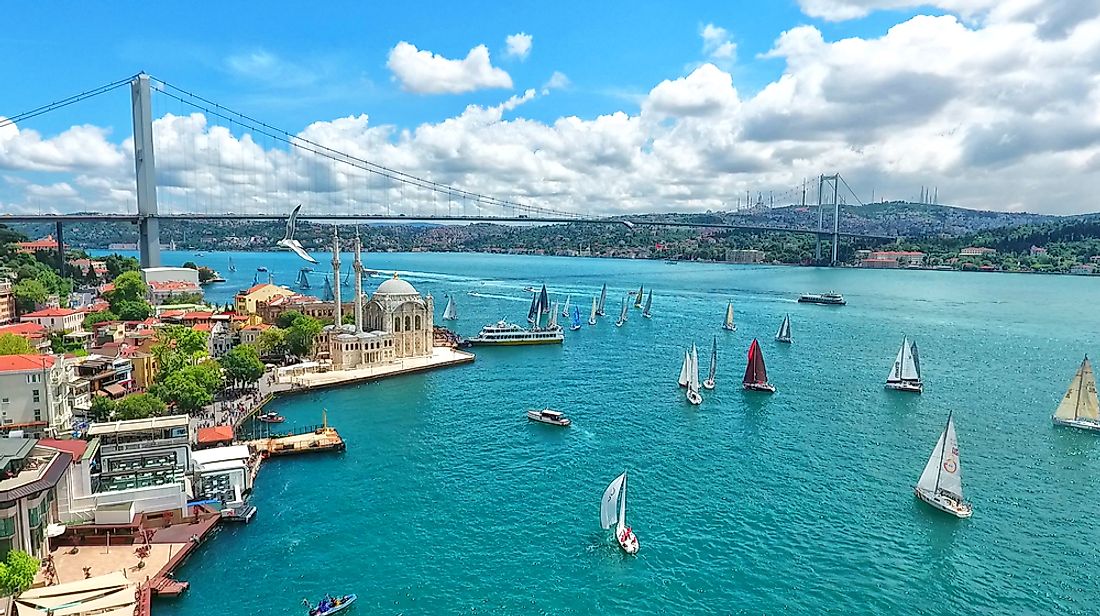What and Where Is The Bosporus?

The Bosporus is a narrow strait situated in Turkey’s city of Istanbul. The strait connects the Sea of Marmara (which forms part of the Mediterranean Sea) to the Black Sea. The Bosporus represents a section of the Asia-Europe continental boundary and divides Turkey into two; European Turkey and Asian Turkey. The northern limit of the strait is marked by the Rumeli Feneri lighthouse while Kadikoy Inciburnu Feneri marks the southern limit. The distance between the two limits is the strait’s length and is 17 nautical miles. The strait’s width ranges between 1.85 nautical miles at its widest section and 0.38 nautical miles. The Bosporus is relatively shallow, with its average depth being 213 feet and its deepest point being 360 feet deep.
Origin
Bosporus comes from the Greek terms “bos” and “poros,” which translates to “cow” and “passage.” The name comes from a mythical story from ancient Greek about Io, a woman who changed to become a cow and was to wander the world until she met Titan Prometheus after crossing the Bosporus. Science does not entirely know the formation of the Bosporus, but a few theories exist that explain the strait’s formation. One theory has it that the Bosporus’ formation was as a result of the rise in water levels of the Mediterranean Sea, which ultimately breached and drained to the Black Sea (which was then lower than the Mediterranean) through the strait. This theory puts the formation of the Bosporus at around 5600 BCE.
History
Empires and kingdoms have clashed over the control of the strait for thousands of years. The ancient Greek and Persian Empires were often engaged in wars, many of which took place on the Bosporus. Darius, the Great of Persia, is remembered for constructing a semi-permanent bridge across the Bosporus using boats, a feat that would be replicated to cross the Dardanelles strait by another Persian king, Xerxes I. Historians believe that the strategic position of the Bosporus influenced the decision of Emperor Constantine of establishing Constantinople (present-day Istanbul) as the Roman Empire’s new capital in 330 CE. The strait had been considered as international territory after the Great War, but Turkey regained control of the strait in 1923 in accordance with the Treaty of Lausanne.
Activities
The strait is of great cultural, economic, and military importance as it is the only maritime link connecting the Mediterranean to the Black Sea. The strait is important in international navigation and has heavy maritime traffic. An estimated 48,000 vessels cross the Bosporus each year, translating to about 132 vessels each day making the strait one of the busiest in the world. Numerous ferries cross the strait each day, carrying with them vehicles and passengers. Land crossings across the strait are made possible by the three bridges that cross the Bosporus, and one cable-stayed bridge and two suspension bridges. The longest of the bridges is the Yavuz Sultan Selim Bridge with a length of 7,100 feet, and it is also the newest crossing on the strait as it was opened in 2016. The two other bridges are the 3,524-foot long Bosphorus Bridge and the Faith Sultan Mehmet Bridge that is 3,576 feet in length.











